
We all love our T-shirts and want to make them last. We want that concert tee to stay clear and vibrant. The problem is that prints can crack, flake, wear away, or slowly fade with time, like the memories of that concert. Meanwhile, the fabric gets roughed up, stretched, and discolored.
It’s all very sad. Here’s the good news: you can totally avoid that fate by following some simple steps.
Stop throwing custom-printed T-shirts in the wash with everything else–give them the special treatment they deserve! Whether they are screen printed, digitally printed, vinyl, or heat transferred, the same rules apply. Follow these steps and keep your favorite tees like new for years to come.

Washing Screen Printed T-Shirts
The absolute best way to safely wash your custom-printed tees is by hand. Turn them inside-out, mix cold water and a mild detergent in a small tub, let soak for 10 minutes or more, then gently agitate for a few minutes, rinse, and let them air dry.
Using a washer and dryer will not destroy your shirts– as long as you take proper precautions. Below are step-by-step instructions for the washing machine, dryer, de-wrinkling, and ironing, plus some general care tips to help you keep your tees looking new for a long time.
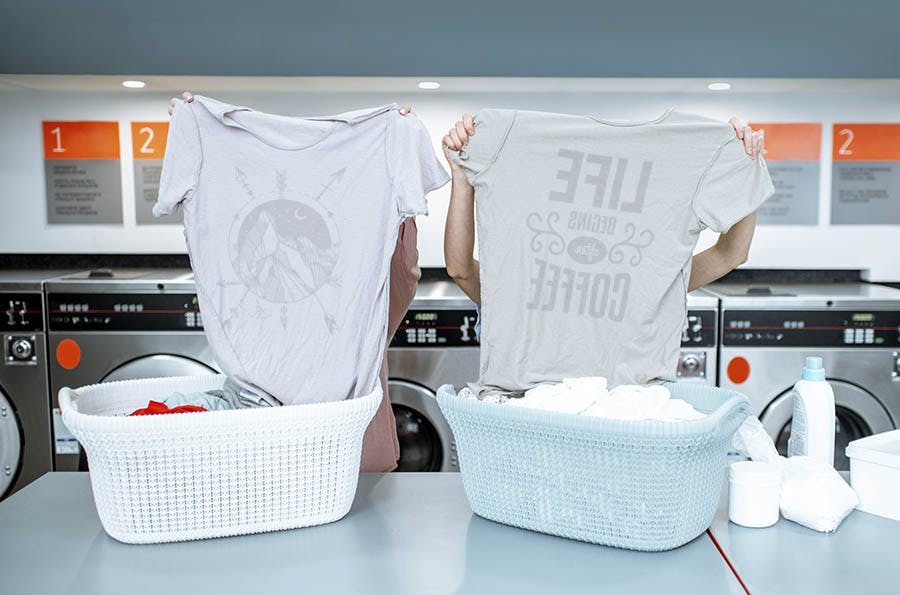
Machine Washing: Step-by-Step
- Turn printed shirts inside-out before washing. This will prevent other garments from rubbing against the print and the dreaded “pilling” of T-shirt fabric.
- Pre-treat areas with a stain remover spray. Do not add extra detergent. Commercial spray products are safe and work well. We recommend OxyClean.
- Gently buff stains with a clean washcloth. Do not use brushes or anything abrasive. Working the fabric against itself can work if you don’t have a washcloth.
- Separate similar colors, weight, and textures. Avoid overfilling the washer or adding heavy materials such as jeans and towels, which can aggravate the fabric.
- Use mild detergent with cold water on a gentle cycle. Warm water, harsh detergents, and aggressive wash cycles are the number one things that damage tees.
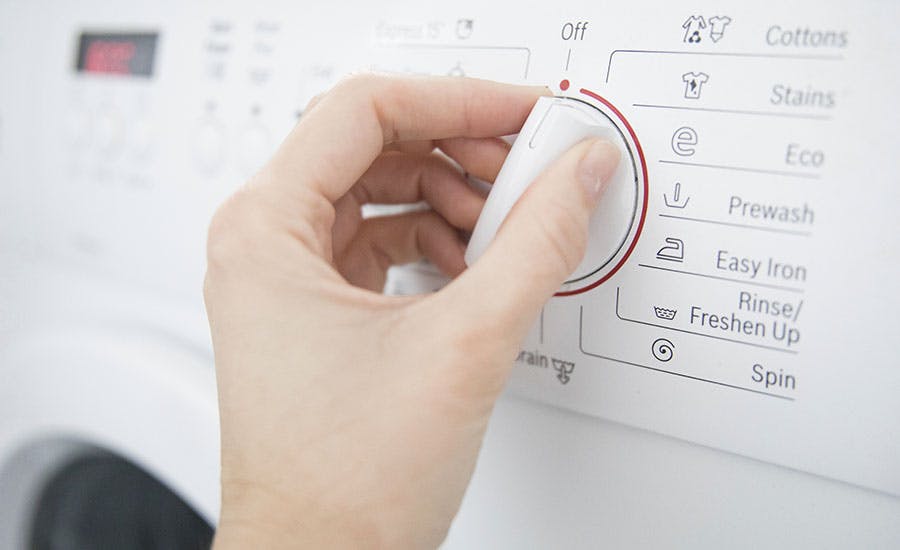
Hand Washing: Step-by-Step
- Fill a tub or a sink with cool water and add a mild detergent.
- Turn printed shirts inside-out before hand washing.
- Pre-treat areas with a stain remover spray.
- Gently buff stains with a clean washcloth, or work the fabric against itself.
- Let the tees soak in soapy water for 10 minutes or more.
- Rinse thoroughly with cool water and gently wring out.
- Hang on a rounded hanger to air dry.
Pro tip: Hand-washing is also the best way to wash your hats.
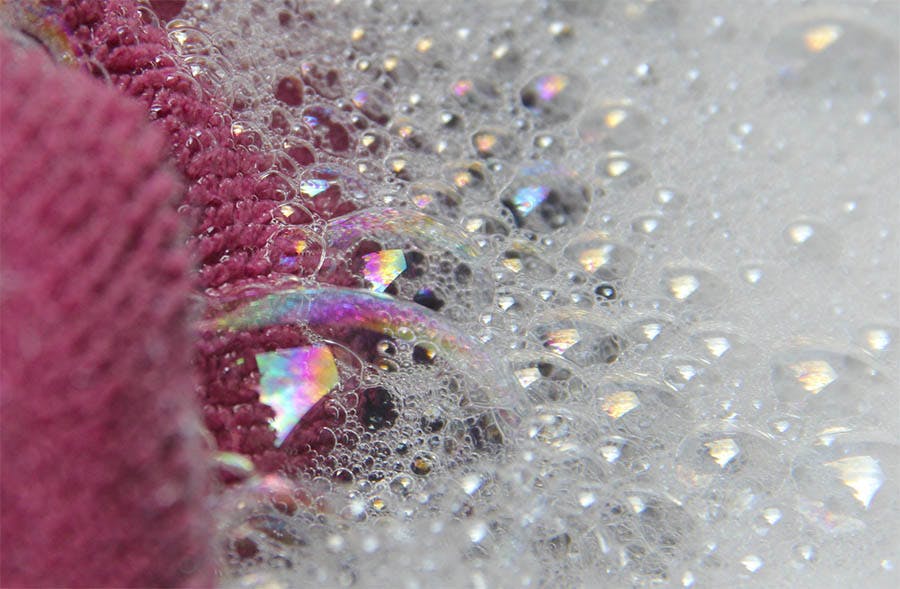
Drying Screen Printed T-Shirts
The second most important thing besides washing is drying, which can do a number on your favorite T-shirts as well. Mostly because of the heat, but also if your dryer is rough and tumble. Avoid the machine if possible.
Air Drying
- Hang the tees on a hanger to air dry. Air drying is the safest method to avoid shrinkage or damage. Put them outside (not in direct sunlight) or in front of a fan.
- Use a thick plastic hanger rather than clothespins. Wire hangers and clothespins can leave pointy shapes in the shoulder areas when it dries. Use the rounded kind.
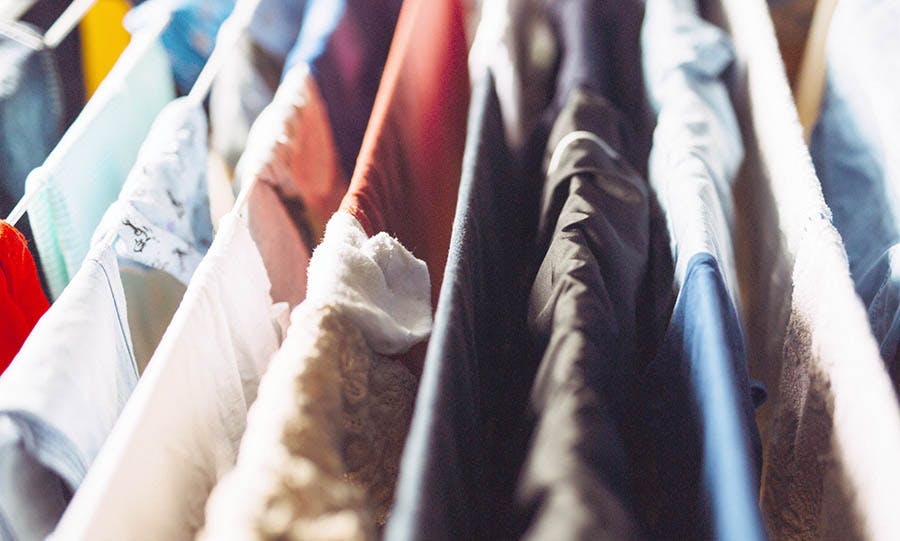
Machine Drying (if you must)
- Turn printed shirts inside-out before drying. This will prevent other garments from rubbing against the print, as well as the dreaded “pilling” of T-shirt fabric.
- Separate out similar weights and textures. Avoid overfilling the dryer or adding heavy materials such as jeans and towels, which can aggravate the fabric.
- Use the lowest possible heat setting or Permanent Press. Heat damages and shrinks fabric and prints, including polyester. Try to remove the tees early before the cycle ends.
Removing Wrinkles
What good is having a clean, fresh T-shirt if it’s full of wrinkles? Cotton shirts are especially prone to wrinkles, and the safe washing instructions mentioned don’t have the benefit of the wrinkle-removing powers of a hot dryer. This is where ironing and steaming come in. Follow these steps to make sure your graphic tee is clean, fresh, and smooth.
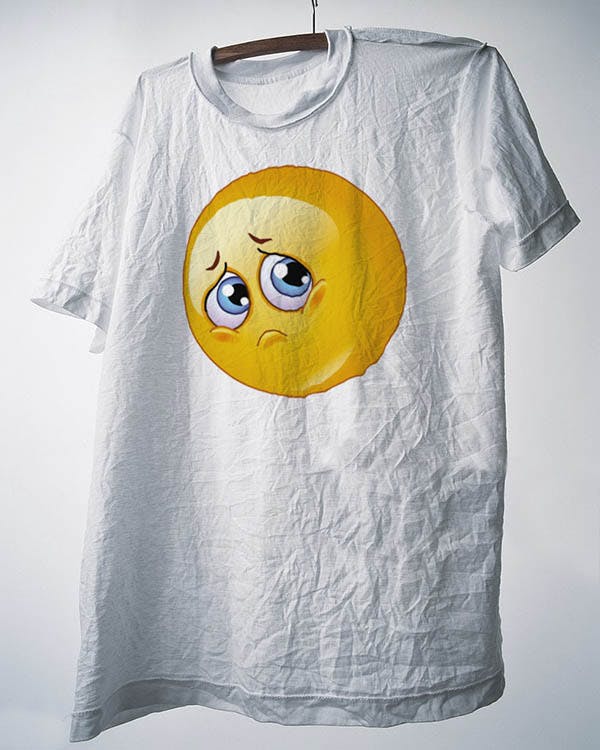
Ironing
- Turn your tee inside-out and drape it onto an ironing board.
- Use iron on the lowest temperature setting, with little to no steam.
- Place a towel or cloth between T-shirt and the iron as your work.
- Continue to reposition the tee and towel as you iron the whole tee.
Steaming
- Hang your tee up inside-out with a hanger and fire up a handheld steamer.
- Use the lowest temperature setting and move the steamer across the fabric.
- Avoid steaming directly onto the print– work around it or steam sparingly.
- Do both sides and the sleeves, and put on right afterward if possible.
Tips and Care Instructions for Printed T-Shirts
- Don’t wash immediately after purchase. Custom printed tees require at least 24 hours to fully cure (the ink dries and sets in). So if they’re hot off the press, give them a day or two to cure for a long-lasting print.
- Ignore the tag. Most T-shirts and similar items–especially 100% cotton will tell you that you can wash them normally. And you can– but it may not be the best way to protect and care for your custom print.
- Separate and sort your items to wash. Colors and darks can go together, with whites separate. You should also separate by texture and weight; heavy and abrasive items like towels and jeans can rough up your T-shirts.
- Try home remedies on particular stains. If you don’t have stain remover to pre-treat your tees, there are plenty of home solutions for stain removal you can use instead (such as vinegar and baking soda) that actually work.
- Hard water can damage fabrics and prints. Find out if your house has hard water. If so, consider washing at a laundromat. If that’s not an option, pre-soak your items in a mixture of 1 cup vinegar per gallon of water.
- Use a laundry bag for extra-special shirts. Laundry bags specially made to keep particular pieces of clothing separate from the rest of the wash will give you maximum protection. You gotta keep ’em separated.
- Only use non-chlorine bleach. Nothing is harsher on your T-shirts than bleach. It can sap the color, fade the print, and even weaken the construction. Non-chlorine, hydrogen-peroxide-based bleach is the way to go.
- Avoid fabric softener. The chemicals in these products can degrade the ink of your print. A home remedy to use instead is vinegar. It can even brighten the colors. Add half a cup to a typical size load of laundry.
- Remove T-shirts from the dryer early. The less heat that your custom printed tee is exposed to, the better. Remove them early, before the cycle is over, and lay them out somewhere to fully dry.
- When in doubt, get them dry cleaned. There’s no shame in letting the professionals handle your toughest stains or most valuable clothing. They have special techniques to lift stains without damaging or shrinking the fabric.
- Use a quality, reliable printing company. The number one thing that can cause a print to fade after washing is not being properly printed in the first place. RushOrderTees provides that quality and we fully guarantee it.
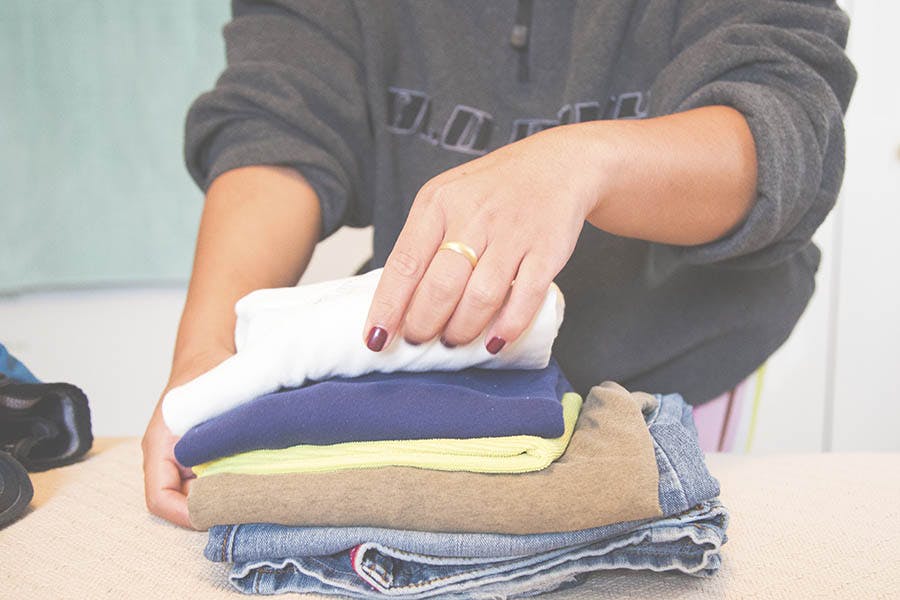
Conclusion
The main thing to remember is always to use cold water and air dry if possible. If you must use warm water or a dryer, keep it to a minimum. Beyond that, avoid any aggressive friction on the fabric or harsh detergents (try Woolite or similar instead).
Once your screen-printed T-shirts are looking good, learn how to properly wash hats and upgrade your entire appearance.
If all else fails, it’s time to order some new gear! Our easy-to-use Design Studio allows you to choose a product, create a design, change colors, upload logos, and much more.

Imri Merritt
About the Author
A graduate of the Multimedia program at the University of the Arts in Philadelphia, Imri Merritt is an industry veteran with over 20 years of graphic design and color separations experience in the screen printing industry.

